Making the Most of Wordsearches – 10 Ways
Anthony Sellick and James Bury, Japan
Anthony Sellick is a teacher based in a high school in the Kanto region of Japan and co-author of several textbooks. His research interests include the psychology of the language classroom and the development of writing skills. E-mail: kawagoeanthony@gmail.com
James Bury is a lecturer at a university in the Kanto region of Japan. His research interests include gendered language and portrayals in EFL textbooks, classroom language, and the development of writing skills.
Menu
Introduction
Traditional wordsearch
Hidden message wordsearch
L1 clues
Scrambled clues
No clues
Cloze wordsearch
Pairwork wordsearch
Team wordsearch
Giant wordsearch
DIY wordsearch
Useful links
Example wordsearches
In this article, we examine various ways to exploit the perennially popular wordsearch format. Wordsearches have been a regular fallback and review activity for stressed language teachers for many years. And why not? They are great at reviewing vocabulary and spelling, are easy to find and prepare via online resources or software, are appropriate for all learner levels and age groups from elementary school to adult, and they are popular with students. What could be better?
Something that’s a little less passive, or which requires a little bit more effort from our students than the traditional wordsearch, perhaps. In this article, we look at some ways in which the wordsearch format can be exploited in the language classroom, and which have proved successful with our classes. We’ll begin with formats that are similar to the traditional style, and then move on to some more adventurous formats.
For the sake of completeness, we will begin with the traditional format. Simply give the students a copy of the wordsearch each and let them find the target words, which are presented with the puzzle.
- Good for all ability levels.
- Works well with multilingual classes.
- Good as an individual, pair, or group activity.
- However, can be a very passive activity.
A popular addition to wordsearche puzzles are hidden messages. Many wordsearch making websites and software allow the insertion of hidden messages among the filler letters, which the students can try to find after they’ve found all of the target words. The students’ names are another “secret” that can be inserted into the filler letters to be found once the main puzzle has been completed, and which has proven popular with students.
- Good for individuals, pairs, and groups.
- Works well with multilingual classes.
- Good for all ability levels.
A slightly more challenging format is to give the students a copy of the wordsearch, but without any English clues. Instead, the clues are presented in the students’ native language, and they have to write the words in the place provided as they find them. This format requires more active thought on the part of a student than the traditional wordsearch format. However, this format can only really be successfully used with monolingual classes.
- Good for all ability levels (teachers may wish to allow lower level students to refer to their textbooks or use dictionaries).
- Works best with monolingual classes.
- Good for individuals, pairs, and groups.
Using scrambled words as clues provides the students with a double puzzle, and encourages the students to think very carefully about spelling. Once the students find the words, they should write them in the place provided.
- Good for all ability levels.
- Works well with multilingual classes.
- Great as a team or small group activity.
Giving the students a wordsearch without any clues at all encourages far greater thought, although this format is best used as a review activity and thus for specifically targeted vocabulary. Once the students have found the words, have them write the words in the places provided below the wordsearch to confirm the spellings.
- Good for all ability levels.
- Works well with multilingual classes.
- Great as a team or small group activity.
Replacing the clues with sentences can provide grammar practice as well as vocabulary practice. Students scan the wordsearch to find the target words, and then enter them into the appropriate gap in the sentence clues, thus completing the sentence. A higher level activity could require the students to transform the target word before entering the word into the sentence.
- Good for all ability levels.
- Works well with multilingual classes.
- Good for individuals, pairs, and groups.
Wordsearches can also make good pairwork activities. Divide the students into pairs, and give each student a copy of the wordsearch without any clues. Then give each student one set of descriptive clues for the target words. The students take turns reading out their clues and then trying to identify and find their target words.
- Good for all ability levels.
- Works well with multilingual classes.
Wordsearches can also be used for active, whole class activities. Divide the students into teams, and give each team an enlarged (B4 or A3) version of the wordsearch without any clues. The teacher can then describe the words, ask for a translation, mime them, show flashcards, and so on, to elicit the target words, which the students have to call out and then try to find. The fastest team to find a word should be rewarded, such as by getting a point. This game can be extended to involve the other teams in various ways, such as by:
- having the students run and write the target word on the board,
- adding bonus questions (e.g. if calling out a sport, asking which verb goes with it – play, do, or go),
- having the students produce a sentence using the target vocabulary, whether verbally or on the board.
-
- Good for all ability levels.
- Works well with multilingual classes.
- For teachers with access to a poster printer, a large wordsearch can be posted on the board or wall, or even on the floor in the centre of the classroom. The students can be divided into teams, with each team being given a different coloured maker. The teacher can elicit the target words by asking for a translation, miming, revealing flashcards, etc., and each team tries to find and circle the target word first. Like the team wordsearch activity, this game can also be extended to involve the other teams in the same ways.
-
- Good for all ability levels.
- Works well with multilingual classes.
A quieter whole class activity is to provide students with an empty grid, into which they enter their own selection of words and filler letters. They then make their own clues, whether words, sentences, or cloze sentences to test their classmates.
- Good for all ability levels.
- Works well with multilingual classes.
We hope that the above ideas will help you to see how flexible the wordsearch format can be, and encourage you to experiment with them in your classes.
A quick Google search will reveal many sites offering free puzzle making services for teachers. Some of these include:
http://tools.atozteacherstuff.com/word-search-maker/wordsearch.php
http://www.armoredpenguin.com/wordsearch/
http://puzzlemaker.discoveryeducation.com/WordSearchSetupForm.asp
http://www.teach-nology.com/web_tools/word_search/
http://worksheets.theteacherscorner.net/make-your-own/word-search/
http://www.teachers-direct.co.uk/resources/wordsearches/wordsearch-maker.aspx
On the following pages some sample wordsearches applying the techniques described above, and using the months of the year as target vocabulary, are presented.
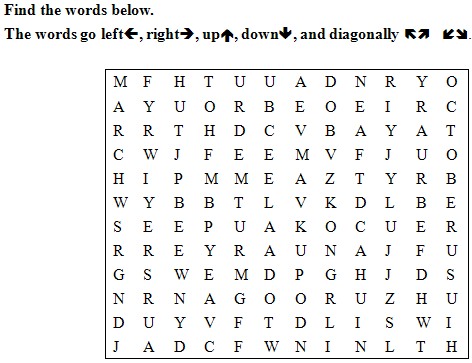
| Clues: |
| January | February | March | April | May | June |
| July | August | September | October | November | December |
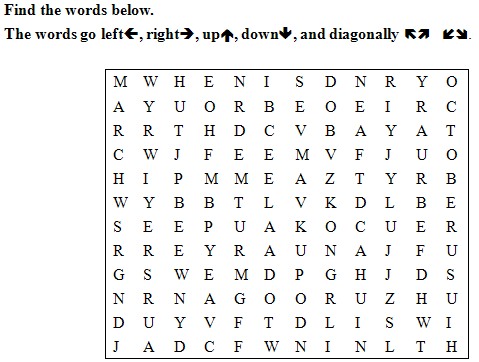
| Clues: |
| January | February | March | April | May | June |
| July | August | September | October | November | December |
Can you find the hidden message?
_ _ _ _ _ _ _ _ _ _ _ _ _ _ _ _ _ _?
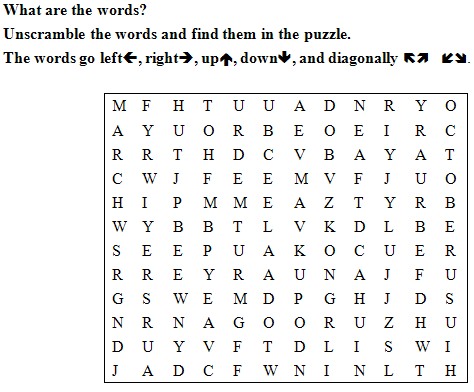
| Clues: |
| yunjaar | ___________ | yma | ___________ | pebersmte | ___________ |
| efaurryb | ___________ | unej | ___________ | roecbto | ___________ |
| hcrma | ___________ | lyju | ___________ | nvreboem | ___________ |
| arlip | ___________ | ugusta | ___________ | recmdebe | ___________ |
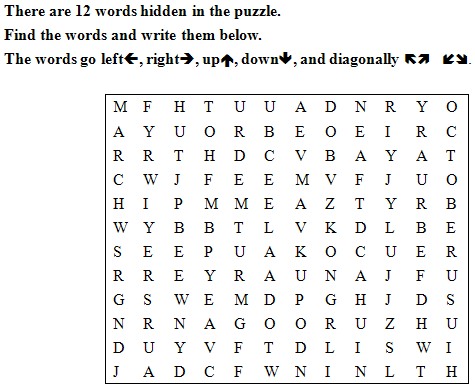
| Words: |
| __________________ | __________________ | __________________ |
| __________________ | __________________ | __________________ |
| __________________ | __________________ | __________________ |
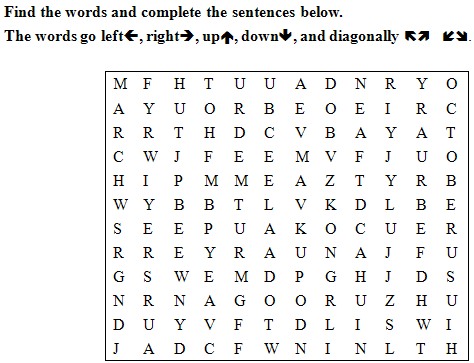
Clues:
- is the first month of the year.
- Valentine’s Day is 14th.
- My mother’s birthday is 24th.
- My birthday is 18th.
- is the fifth month of the year.
- My sister was a bride.
- The month named by Julius Caesar is.
- The month named by Augustus Caesar is.
- is the ninth month of the year.
- Halloween is on the last day of.
- is my favorite month.
- 25th is Christmas Day.
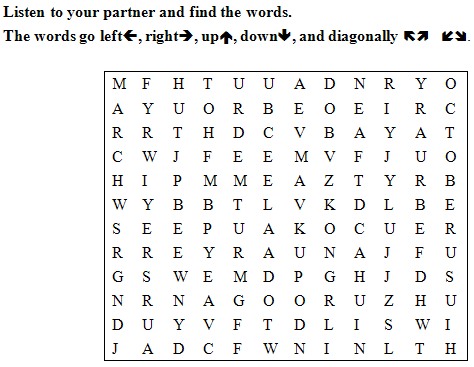
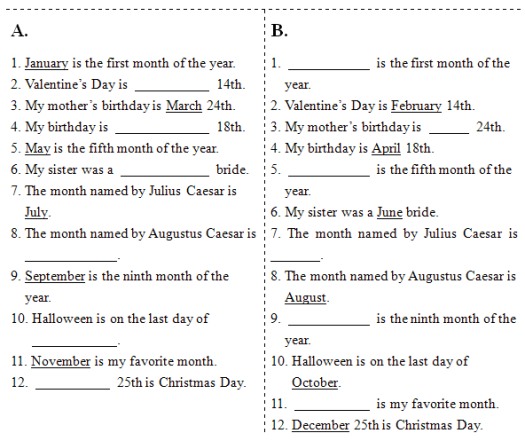
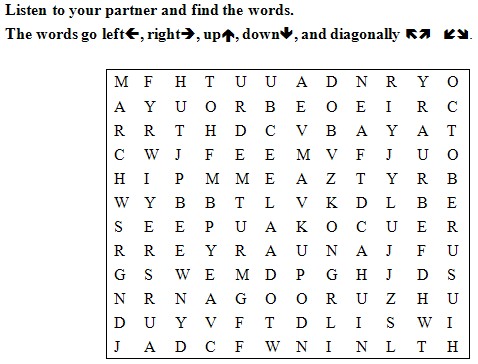
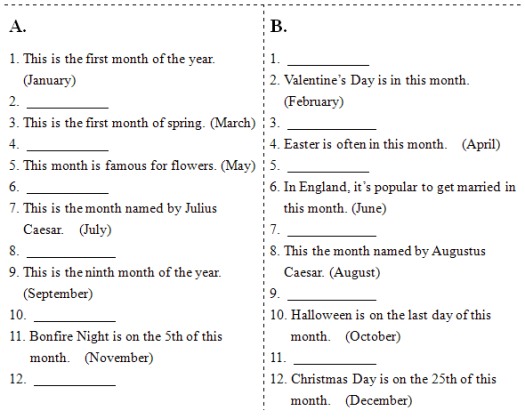
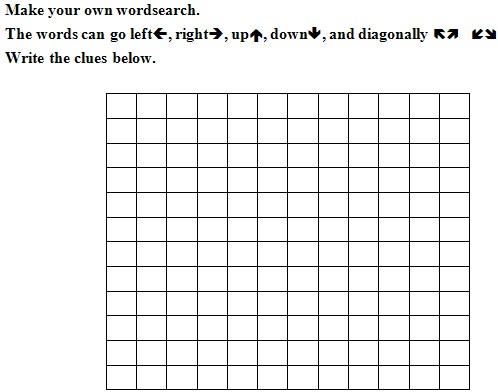
| Clues: |
| __________________ | __________________ | __________________ |
| __________________ | __________________ | __________________ |
| __________________ | __________________ | __________________ |

Please check the Methodology and Language for Primary Teachers course at Pilgrims website.
Please check the Methodology and Language for Secondary Teachers course at Pilgrims website.
Please check the Creative Methodology for the Classroom course at Pilgrims website.


|